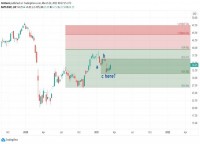|
Opalesque Industry Update - From law firm Reed Smith: The Fifth Anti-Money Laundering Directive (MLD5) has brought certain virtual currency services within the scope of the European anti-money laundering framework, realising an action plan adopted by the European Commission over two years ago. This latest step comes after political agreement on the language of MLD5 was reached in December 2017,1 with the European Parliament then agreeing to the draft text on 19 April 2018. The rules were then adopted by the Council of the European Union at a meeting of the General Affairs Council, without discussion. The adoption of MLD5 marks the end of a two-year legislative process, which began with the European Commission's proposal in 2016 . One of the aims of MLD5 is to increase transparency in newly developed payment methods, and thereby bring virtual currencies into the scope of European anti-money laundering regulation. The new language consequently expands the existing directive to cover "virtual currency exchanges" and "custodian wallet providers", with the result that these businesses will need to carry out customer due diligence on prospective clients. MLD5 provides the first EU definition of virtual currency. The finalised definition differs from the one first proposed in 2016 (significant changes highlighted): "A digital representation of value that is not issued or guaranteed by a central bank or a public authority, is not necessarily attached to a legally established currency and does not possess a legal status of currency or money, but is accepted by natural or legal persons as a means of payment exchange and which can be transferred, stored and traded electronically." The replacement of the term "payment" with "exchange" clearly widens the scope of this definition. A token that: (i) is not accepted by any merchant or individual as a means of payment for goods or services; and (ii) may only be exchanged on a limited number of virtual currency exchanges, may have fallen outside of the original definition, but will likely be caught by the finalised version. It would be difficult to argue that an integral characteristic of any token is not its exchangeability. Recital 10 of MLD5 states that "although virtual currencies can frequently be used as a means of payment, they could also be used for other purposes and find broader applications such as means of exchange, investment, store-of-value product or use in online casinos". It appears that this definition was created to cover any coin or token issued through an initial coin offering (ICO), notwithstanding its inherent features - a sentiment prevalent in the MLD5 preamble, which states that "the objective of this Directive is to cover all the potential uses of virtual currencies". The finalised MLD5 text also appears to extend the scope of the definition of virtual currency exchanges. For instance, the European Commission's 2016 proposal referred to "providers engaged primarily and professionally in exchange services between virtual currencies and fiat currencies". The 2018 text has removed the reference to "primarily and professionally", widening the range of services and businesses that might be caught. However it is clear that the exchange must allow customers to exchange virtual currencies with fiat currency to fall within scope. On a literal reading, a pure virtual currency exchange, which only offers a crypto-to-crypto exchange service, will be out of scope. Custodian wallet providers (entities that provide services to safeguard private cryptographic keys on behalf of their customers, to hold, store and transfer virtual currencies) will, along with virtual currency exchanges, become obliged entities under MLD5. Those entities in scope will be required to carry out customer due diligence, including know-your-customer checks. MLD5 also makes it clear that virtual currency should not be confused with e-money (as defined in article 2 or funds (limited to meaning banknotes and coins, scriptural money or electronic money, as defined in point 25 of article 4 of the Payment Services Directive). The potential categorisation of ICOs as e-money issuance has been a hot topic of debate around Europe for some time. The step towards regulatory clarity in this regard will be welcomed. This is an important and much-awaited development in the cryptocurrency regulatory landscape. In accordance with article 4 of MLD5, EU member states have until 10 January 2020 to implement the directive into national law. This is a final deadline date and the European Commission is encouraging earlier implementation from member states. Although this may seem like a reasonable period of time, virtual currency exchanges and custodian wallet providers should begin to prepare now. Compliance with MLD5 could mark a significant change in business models, and in on-boarding processes specifically. The cost (in both time and money) involved in regulatory compliance should not be underestimated. Article source - Opalesque is not responsible for the content of external internet sites |
Industry Updates
MLD5: EU's latest AML directive introduces virtual currency regulation
Thursday, August 16, 2018
|
|





 RSS
RSS







